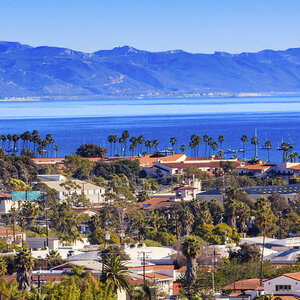The WPJ
THE WORLD PROPERTY JOURNALReal Estate Facts Not Fiction
Vacation Real Estate News

Asia Pacific Hotel Markets Bounce-Back Quickly from Global Economic Crisis
Vacation News » Vacation & Leisure Real Estate Edition | By Michael Gerrity | March 17, 2011 8:00 AM ET
Based on a new report by Portsmouth, NH-based Lodging Econometrics, some of the world's fastest growing economies, chiefly China, India, Vietnam, and Indonesia, the Asia Pacific region continues to demonstrate a quick bounce-back from the global economic crisis. Sweeping fiscal and monetary stimÂulus programs mitigated the impact of the recession. As a result, strong economic growth of 5% or more is expected in many Asian countries through 2013.
Recently overtaking Japan, China is now the world's second largest economy and the primary force in driving current global lodging development growth. At the end of Q4, China had the second largest Total Pipeline of any country at 1,182 projects/323,194 rooms. For the second consecutive quarter, China led the world in Construction Starts, with 139 projects/25,498 rooms in Q4. Also, for the first time ever, the country exceeded the United States in New Project Announcements (NPAs) into the Pipeline, with 155 projects/30,191 rooms.
India's Total Pipeline, the third largest in the world, grew for a fourth consecutive quarter to 456 projects/80,738 rooms in Q4. Like China, India's economy is one of the fastest growing in the world, but its Pipeline totals were just 39% of China's total projects and a distant 25% of its rooms. Most global hotel companies have a high interest in India and continue to announce growth strategies for the country, which should boost development metrics and feed Pipeline growth through mid-decade.
Lodging operations have recovered substantially, with some of strongest increases off the recessionary bottom for any region worldwide. Average Rate and RevPAR in Asia Pacific recorded double-digit increases from 2009 to 2010. Occupancy was also up significantly. All three metrics will likely be fully recovered in 2011, and could potentially exceed pre-recession highs, further energizing already high development activity in the region, particularly in China and India.
ASIA PACIFIC HIGHLIGHTS
With 1,182 projects/323,194 rooms, China had the second largest Total Pipeline of any country in Q4. 77% of all projects and rooms were Under Construction, one of the highest percentages in the world. China will have the highest amount of new rooms coming online as new supply over the next two years. LE's Forecast for New Hotel Openings expects 479 new hotels/89,928 rooms to open in 2011, with an additional 292 hotels/91,924 rooms in 2012. China's Total New Projects Announcements (NPAs) into the Pipeline continued to rise annually, growing 25% by projects and 17% by rooms from 2009 to 2010. ConÂstruction Starts for projects already in the Pipeline also rose, up 31% for both projects and rooms.
India's Total Pipeline increased slightly from Q3 2010 to 456 projects/80,738 rooms. With 50% of all projects and 53% of rooms Under Construction, LE anticipates New Hotel Openings to rise, with 95 new hotels/14,377 rooms forecasted to open in 2011, and then increase again in 2012 to a new cyclical high of 91 hotels/17,924 rooms. Developer activity in India has grown over the last three years, but at a lesser pace than seen in China. New Project Announcements into the Pipeline were up 19% year-over-year by projects, while Construction Starts were up 10%. Increasing expansion plans by global hotel companies will likely keep development metrics on a modest upward trajectory for the next few years.
Other Asia Pacific countries, especially countries in the Southeast like Vietnam, Indonesia, Thailand, and Malaysia, saw an uptick in development activity in 2010. The Total Pipeline rose for the first time in seven quarters to 345 projects/74,827 rooms, up 12% by projects and 10% by rooms over Q3 2010. Annual totals for underlying development metrics also rebounded. In 2010, total NPAs were up 34% over 2009, with 147 projects/29,142 rooms. ConstrucÂtion Starts, at a total of 130 projÂects/27,945 rooms in 2010, were up 43% by projects and 55% by rooms, surpassing the 2008 pre-recession high in 2008.
As regional governments enact stronger measures to control escalatÂing inflation, the pace of development activity may moderate a bit, but is exÂpected to keep trending higher through the middle of the decade.
Sign Up Free | The WPJ Weekly Newsletter
Relevant real estate news.
Actionable market intelligence.
Right to your inbox every week.
Real Estate Listings Showcase
Related News Stories
Vacation Real Estate Headlines
- Short-term Vacation Rentals Outperform U.S. Hotels in Q2
- Record Setting 72.2 Million Americans Traveling for July Fourth Holiday
- Record 45.1 Million Americans to Travel Over 2025 Memorial Day Weekend
- U.S. Vacation Home Sales Fall to Lowest Level Since 2018
- Disney Announces New Landmark Theme Park Resort in Abu Dhabi
- Despite Geopolitical Uncertainty, European Hotel Values Rise
- Record 119 Million Americans Traveling Over the Christmas Holidays
- 80 Million Americans to Hit the Road, Skies and Seas for 2024 Thanksgiving Holiday
- Asia Pacific Hotel Investment to Exceed $12 Billion in 2024
- Asia Pacific Hotel Investment Tops $12 Billion in 2024
- Seattle, Orlando and New York Top Labor Day Destinations in 2024
- Record 71 Million Americans Traveling Over July Fourth Week
- Major Hotel Operators Expanding Rapidly Across Asia Pacific in 2024
- 44 Million Traveling Memorial Day Weekend, Second Most in History
- South Korea is Asia Pacific's Top Performing Hotel Market
- Florida Dominates Top 10 U.S. Cities List to Invest in Short Term Rentals
- Investment in South Korea Hotels Dipped in 2023
- European Hotel Values Still Below Pre-Covid Prices
- Over 115 Million Americans Traveling Over Christmas Holidays
- 55.4 Million Americans on the Move Thanksgiving Holiday
- Asia Pacific Tourism to Approach Full Recovery in 2024, Driving Hotel Sector Growth
- Asia Pacific Hotel Revenues to Rise in 2024 Despite Economic Volatility
- Tourist Bookings to Hawaii Down 50 Percent Since Maui Wildfires
- Demand for Vacation Homes in U.S. Hit 7-Year Low in August
- International Travel for Americans Jumps Over 200 Percent in 2023
- U.S. Labor Day Weekend Travel To Uptick in 2023
- Asia Pacific Hotel Investment Collapses 51 Percent in 2023
- As Summer Travel Season Winds Down, U.S. Gas Prices Rise Again
- Record Setting 50.7 Million Americans to Travel This July Fourth Holiday
- Israel Hotels Poised for Growth as International Visitors Set to Return
- Over 42 Million Americans to Travel This Memorial Holiday Weekend
- European Hotel Transactions Decline 18 Percent in 2022 as Interest Rates Surge
- U.S. Vacation Home Demand Dives 50 Percent from Pre-Pandemic Levels
- European Hotel Values Upticked 3 Percent in 2022
- U.S. Vacation Rental Bookings Rise 27 Percent Annually in January
- Third-Party Hotel Operators Set to Increase Across Europe in 2023
- 113 Million People Traveling in the U.S. During the 2022 Holiday Season
- London Hotels Set to Weather High Inflation in 2022
- Almost 55 Million People to Travel This Thanksgiving Holiday in America
- Düsseldorf Hotels Enjoy Growing Corporate Demand in 2022
Reader Poll
Marketplace Links
This website uses cookies to improve user experience. By using our website you consent in accordance with our Cookie Policy. Read More







